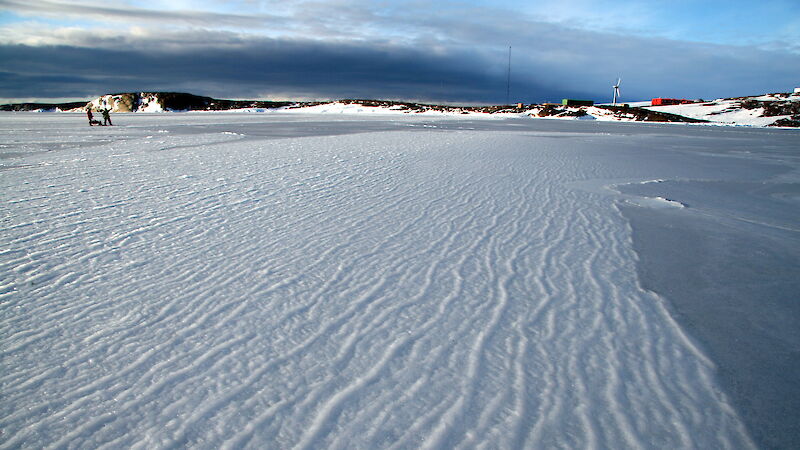The presence and variability of sea ice around Antarctica and the Arctic is very important to the global climate. The total coastline of Antarctica is 23,358 kilometres. Sea ice extends outwards from the continent’s edge. Sea-ice coverage more than doubles the effective ice-covered area of the Antarctic continent in late winter (almost 20 million km²) from its minimum in late summer (4 million km²). This large seasonal fluctuation affects the exchange of energy, mass and momentum between the ocean and atmosphere.
Ice is constantly driven by winds and ocean currents at speeds averaging 10–20km/day. This has important implications for redistributing ice within the pack, creating leads where new ice may form, and for thickening ice by rafting and ridging.
In the southern summer, sea ice is mostly confined to the western Weddell Sea, the southern Bellingshausen and Amundsen Seas and the south-east Ross Sea, with a narrow fringe of ice usually evident around much of the continent. In the winter, the maximum ice edge extends furthest north in the eastern Weddell Sea, and furthest south in the western Bellingshausen Sea. Although the sea ice grows and shrinks in a seasonal cycle, the amount of ice produced each year varies.
Sea ice formation
Sea ice forms when small, randomly-oriented ice crystals join together in a thin sheet, which then grows downward as water freezes on its base. If there are waves, the ice forms into nearly circular discs or “pancakes” which stick to each other and then join forming a continuous cover up to tens of centimetres thick. Four main factors affect the development of sea ice:
- water temperature
- air temperature
- wave action
- ocean currents
When ice forms on the sea surface in the Antarctic winter, its salt is pushed out into the water below forming cold, dense and very saline water. This cold water sinks to the ocean floor and spreads throughout the world’s ocean basins, sometimes even reaching latitudes of 45° North.
Because it is white, sea ice reflects the sun’s heat back into space. The resultant Antarctic cooling allows more sea ice to form and further amplifies changes in climate. But sea ice also acts as a patchy blanket, restricting the critical exchange of heat and water between the atmosphere and the ocean. In addition, the formation and melting of sea ice affect ocean circulation in the Southern Hemisphere. By altering the seasonal habitat of microorganisms, sea ice has an effect on the food chain. It also has an influence on the absorption of atmospheric carbon dioxide.

